Biopharma
Name
Published by
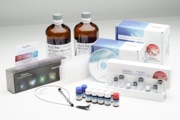
This advanced method offers an end-to-end solution developed around an advanced application, a specialized kit, or an analytical system. It delivers complete functional, ready-to-use protocols that are qualitatively and quantitatively assessed for consistency, executability, and repeatability, usually without needing to make any changes. It operates per batch size and is scalable to accommodate changing requirements.
The task of accurately separating, identifying, and quantitating amino acids in the research, development, and commercialization of food, feed, and biotherapeutic products is challenging.
To analyze released amino acids by HPLC or UPLC, Waters provides many solutions that use pre-column derivatization so that amino acids can be analyzed by optical detection.
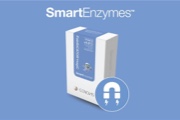
This advanced method offers an end-to-end solution developed around an advanced application, a specialized kit, or an analytical system. It delivers complete functional, ready-to-use protocols that are qualitatively and quantitatively assessed for consistency, executability, and repeatability, usually without needing to make any changes. It operates per batch size and is scalable to accommodate changing requirements.
Developing a robust process for manufacturing therapeutic mAbs poses many analytical challenges. This requires high-throughput methods with fast sample preparation, robust analytics, and easy data interpretation.
Here we present a fully automated workflow for sample preparation for middle-level analysis by LC-MS of mAbs directly from crude protein samples such as harvested cell culture fluid.
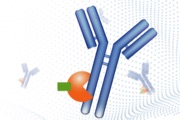
This basic method provides the core methodology for translating a workflow into OneLab-executable script(s) as an attempt to fully or semi-automate a specific procedure. It demonstrates the benefits of automation and highlights OneLab capabilities and best practices to promote solution adoption, helping transition from manual to a more automated approach. It can be used alone or serves as a building block for a more complex workflow and is easily adaptable to users' requirements.
Antibody purification is routinely performed in biopharmaceutical research. Here, we present a rapid automated Protein A-based antibody purification method using magnetic beads. The robust protocol ensures high antibody recovery.
The automation capabilities of the Andrew+ Pipetting Robot allow for the flexibility of processing samples up to 48 samples depending on throughput needs.
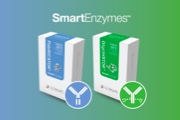
This advanced method offers an end-to-end solution developed around an advanced application, a specialized kit, or an analytical system. It delivers complete functional, ready-to-use protocols that are qualitatively and quantitatively assessed for consistency, executability, and repeatability, usually without needing to make any changes. It operates per batch size and is scalable to accommodate changing requirements.
Subunit analysis of therapeutic antibodies by LC-MS using FabRICATOR (IdeS) digestion provides a rapid approach for analyzing many important quality attributes including Fc glycosylation and oxidation.
Here, we describe protocols for automated sample preparation using the Andrew+ Pipetting Robot.
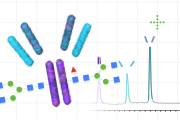
This basic method provides the core methodology for translating a workflow into OneLab-executable script(s) as an attempt to fully or semi-automate a specific procedure. It demonstrates the benefits of automation and highlights OneLab capabilities and best practices to promote solution adoption, helping transition from manual to a more automated approach. It can be used alone or serves as a building block for a more complex workflow and is easily adaptable to users' requirements.
High-throughput analytical platforms for the characterization of proteins produced at clone selection stage have also been increasingly on demand to facilitate the development of these biopharmaceuticals.
Here we present a fully automated workflow for sample preparation and LC-MS analysis of mAbs obtained directly from unrefined samples such as spent cell culture media including host cells protein.
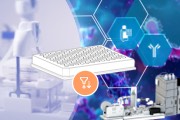
This advanced method offers an end-to-end solution developed around an advanced application, a specialized kit, or an analytical system. It delivers complete functional, ready-to-use protocols that are qualitatively and quantitatively assessed for consistency, executability, and repeatability, usually without needing to make any changes. It operates per batch size and is scalable to accommodate changing requirements.
An automated Protein A affinity purification method for up to 96 culture media samples in a well plate format is presented. The automation uses Cytiva antibody purification resin1 on Andrew+ liquid handling robot.
The purification consumes 120 µL HCCF to generate 100 µL of antibody in neutral pH buffer solution. Dynamic processing of 96 samples demonstrated excellent recovery and reproducibility.
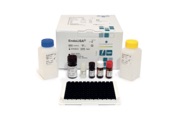
This example method provides a freely adjustable framework for measuring the adaptability of the OneLab environment to workflows from different application fields. It helps to understand various nuances of the code-free, universal protocol designer and provides general indications as to the feasibility of a project. Scripts generally require fine adjustment to correct for variables and support specific labware implementation.
Adequate endotoxin testing is invaluable in ensuring quality and safety. LAL assays require cumbersome sample preparation and are easily disturbed by different constituents of the sample.
EndoLISA, combining solid-phase format and synthetic rFC, achieves sensitive detection of endotoxin by eliminating interfering components. It can be automated, which accelerates the test with minimal human error.

This advanced method offers an end-to-end solution developed around an advanced application, a specialized kit, or an analytical system. It delivers complete functional, ready-to-use protocols that are qualitatively and quantitatively assessed for consistency, executability, and repeatability, usually without needing to make any changes. It operates per batch size and is scalable to accommodate changing requirements.
Monitoring N-Glycosylation is increasingly applied in the development of biopharmaceuticals and the study of diseased cells. Glycan preparation is laborious, and analytical methods lack sensitivity.
GlycoWorks RapiFluor-MS accelerates N-glycan preparation while improving detection sensitivity. Repeatability and traceability are assured when paired with Waters Lab automation solutions.
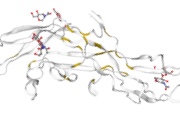
This basic method provides the core methodology for translating a workflow into OneLab-executable script(s) as an attempt to fully or semi-automate a specific procedure. It demonstrates the benefits of automation and highlights OneLab capabilities and best practices to promote solution adoption, helping transition from manual to a more automated approach. It can be used alone or serves as a building block for a more complex workflow and is easily adaptable to users' requirements.
N-glycans affect the safety and efficacy of many therapeutic proteins and are routinely monitored for the quality of biotherapeutics.
Here, we present a complementary method for analyzing the complex N-glycans released from human chorionic gonadotrophin (hCG). The automated method provides a reproducible glycan profile and is suitable for commercial as well as research environments.
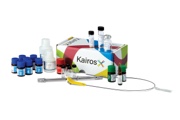
This basic method provides the core methodology for translating a workflow into OneLab-executable script(s) as an attempt to fully or semi-automate a specific procedure. It demonstrates the benefits of automation and highlights OneLab capabilities and best practices to promote solution adoption, helping transition from manual to a more automated approach. It can be used alone or serves as a building block for a more complex workflow and is easily adaptable to users' requirements.
To analyze amino acids in biological samples by LC-MS, Waters provides a fast reproducible solution that uses pre-column derivatization built on the AccQ•Tag reaction chemistry, with the ability to quantitate over 40 amino acids in less than 10 minutes.
Waters Kairos Amino Acid Kit – High Throughput (500+) enables precise and accurate preparation of over 40 amino acids using the Andrew+ Pipetting Robot.
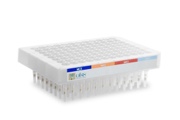
This basic method provides the core methodology for translating a workflow into OneLab-executable script(s) as an attempt to fully or semi-automate a specific procedure. It demonstrates the benefits of automation and highlights OneLab capabilities and best practices to promote solution adoption, helping transition from manual to a more automated approach. It can be used alone or serves as a building block for a more complex workflow and is easily adaptable to users' requirements.
Mixed-mode SPE is a sample clean-up technique for LC-MS analysis. Selecting a mixed-mode SPE sorbent can be challenging, requiring a good understanding of the sorbent/analyte chemistry. In addition, it involves accurate and precise pipetting steps.
This protocol demonstrates a rapid and robust Andrew+ automated mixed-mode SPE sorbent selection method using the Oasis 2x4 sorbent selection plate.
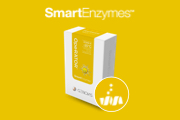
This advanced method offers an end-to-end solution developed around an advanced application, a specialized kit, or an analytical system. It delivers complete functional, ready-to-use protocols that are qualitatively and quantitatively assessed for consistency, executability, and repeatability, usually without needing to make any changes. It operates per batch size and is scalable to accommodate changing requirements.
Developing a robust process for manufacturing biopharmaceuticals poses many challenges. It requires high-throughput methods with fast sample prep, reproducible analytics, and easy data interpretation.
Here we present an automated sample prep workflow to compare the O-glycopeptide profiles of heavily O-glycosylated protein therapeutics using the O-protease OpeRATOR for subsequent LC-MS analysis.
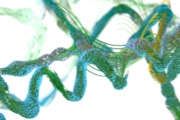
This advanced method offers an end-to-end solution developed around an advanced application, a specialized kit, or an analytical system. It delivers complete functional, ready-to-use protocols that are qualitatively and quantitatively assessed for consistency, executability, and repeatability, usually without needing to make any changes. It operates per batch size and is scalable to accommodate changing requirements.
Reproducible peptide maps are valuable for the routine analysis of biotherapeutic proteins in R&D, QC, and manufacturing environments.
Here, we present an automated comprehensive sample prep protocol using the PeptideWorks™ sample preparation kit and the Andrew+ Pipetting Robot. The automated method provides a reproducible protein digest and is suitable for commercial and research environments.
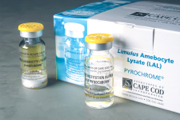
This advanced method offers an end-to-end solution developed around an advanced application, a specialized kit, or an analytical system. It delivers complete functional, ready-to-use protocols that are qualitatively and quantitatively assessed for consistency, executability, and repeatability, usually without needing to make any changes. It operates per batch size and is scalable to accommodate changing requirements.
Endotoxin testing is a requirement for any injectable drug or medical device to ensure safety. Pyrochrome® is a 96 well microplate based chromogenic Limulus Amebocyte Lysate (LAL) assay that requires a complex plate building process with numerous pipetting steps.
Standard curve and positive product control (PPC) preparation, sample arraying, and reagent dispensing are time consuming and tedious steps that can be accomplished using an Andrew+ robot.
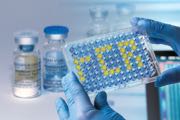
PyroSmart NextGen® Recombinant Cascade Reagent (rCR) for Endotoxin Detection
Associates of Cape Cod, Inc.
This advanced method offers an end-to-end solution developed around an advanced application, a specialized kit, or an analytical system. It delivers complete functional, ready-to-use protocols that are qualitatively and quantitatively assessed for consistency, executability, and repeatability, usually without needing to make any changes. It operates per batch size and is scalable to accommodate changing requirements.
Endotoxin testing is a requirement for any injectable drug or medical device to ensure safety. PyroSmart NextGen® is a 96 well microplate based chromogenic that utilizes recombinant proteins as key inputs.
The assay requires a complex plate-building process with numerous pipetting steps. Standard curve and positive product control (PPC) preparation, sample arraying, and reagent dispensing are time-consuming and tedious steps that can be accomplished using an Andrew+ robot.

This example method provides a freely adjustable framework for measuring the adaptability of the OneLab environment to workflows from different application fields. It helps to understand various nuances of the code-free, universal protocol designer and provides general indications as to the feasibility of a project. Scripts generally require fine adjustment to correct for variables and support specific labware implementation.
This protocol streamlines filling Bio-Techne’s Simple Western™ pre-filled plate with the Chemiluminescence assay. OneLab’s automation with Andrew+ ensures precise setup, aligning with the same time efficiency and reproducibility found with Jess™ platform, powered by Simple Western™ technology.
Jess system and other Simple Western platforms offer a solution to quicker and better results than traditional Western blot and ELISA.
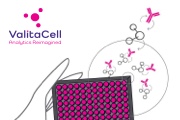
This example method provides a freely adjustable framework for measuring the adaptability of the OneLab environment to workflows from different application fields. It helps to understand various nuances of the code-free, universal protocol designer and provides general indications as to the feasibility of a project. Scripts generally require fine adjustment to correct for variables and support specific labware implementation.
The manufacturing of therapeutic IgG antibodies is a complex process that requires precise monitoring. A major issue to address in relation to IgG measurement is reproducibility.
The Valita®Titer assay combined with Andrew Alliance’s automation and OneLab software provides a standardized and traceable solution for fast and accurate IgG quantitation, thus mitigating the effect of user variability.
